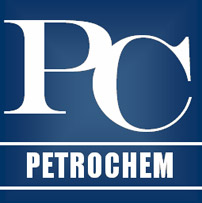Advanced Non Destructive Testing
Phased array ultrasonics (PA) is an advanced method of ultrasonic testing that has applications in industrial nondestructive testing. Common applications are to or to find flaws in manufactured materials such as welds. The beam from a phased array probe can be focused and swept electronically without moving the probe. The beam is controllable because a phased array probe is made up of multiple small elements, each of which can be pulsed individually at a computer-calculated timing. The term phased refers to the timing, and the term array refers to the multiple elements. Phased array ultrasonic testing is based on principles of wave physics.
Waves that combine in phase reinforce each other, while the waves that combine out of phase will cancel each other. Phase shifting or phasing, is in turn a way of controlling these interactions by time-shifting wave fronts that originate from two or more sources. It can be used to bend, steer or focus the energy of wave front.
Ultrasonic Phased array system utilized multiple point source transducers that were pulsed so as to direct sound beam of these controlled interference pattern. An array transducer contains a number separate elements in a single housing, and phasing refers to how these elements are sequentially pulsed. A phased array system is around a specialized ultrasonic transducer that contains many individual elements (typically from 16 to 256) that can be pulsed separately in programmed pattern. These transducers are used with various types of wedges, in contact mode or in immersion testing. Their shape may be a square, rectangular or round and test frequencies are in the range of 1 to 10 MHz. Phased array technique has many potential applications, but can be inhibited by limitations such as geometry, time and access.
Time of flight diffraction technique: If an ultrasonic wave is incident on a defect the wave is reflected, transmitted and also diffracted energy spreads over a wide angle and can be picked up from almost anywhere along the surface of the structure. The defect detection method based on the measurements of time difference between diffracted signals from the extremities of a defect is called ToFD technique. Diffraction takes place in space and its reception takes place in time. Hence it is named as time of flight diffraction. ToFD does not depend on the orientation and surface features of the discontinuity.
Petrochem has capabilities to provide ToFD supplementary with PAUT for Weld inspection and crack detection on most important applications, and these tests are done across a wide range of industries including power generation, petrochemical, metal billet and tubular goods suppliers, pipeline construction and maintenance, structural metals, and general manufacturing.
Computed radiography (CR): CR uses very similar equipment to conventional radiography except that in place of a film to create the image, an imaging plate (IP) made of photostimulable phosphor is used. The imaging plate is housed in a special cassette and placed under the body part or object to be examined and the x-ray exposure is made.
To process the IP, it is placed into a scanner, where a focused laser beam is used to trigger the phosphor layer to emit light, the amount of light emitted being directly proportional to the quantity of radiation that the IP was exposed to. The emitted light is detected and converted to a digital signal. The digital signals can then be displayed via a monitor as a raw image. Subsequent processing of that image can allow the operator to view the data captured and manipulate it to produce the best image of the object or area of interest. This image can then be annotated, stored and exported. The raw data is also stored unaltered for future reference. After processing, the system can wipe the IP clear so it can be re-used.
Direct Digital Radiography (DDR) DDR uses a Flat Panel Detector (FPD) to capture the image instead of a film or IP. The incidental radiation creates a digital signal either indirectly, via a scintillator that emits light when exposed to radiation (this is detected by a photosensitive diode layer) and a digital signal is produced, or directly where the FPD converts the incident radiation to a charge pattern. The raw data is displayed instantaneously on the viewing computer system, allowing control of the exposure live on the system. Once the image is captured it can be manipulated to produce the best image of the object or area of interest. This image can then be annotated, stored and exported. The raw data is also stored unaltered for future reference.
